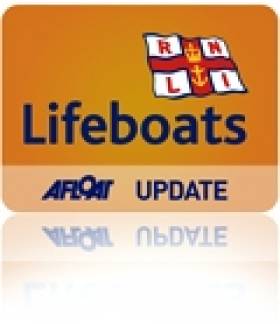Displaying items by tag: Cahore
#RNLI - The volunteer lifeboat crew of the Courtown lifeboat launched last Wednesday evening (24 July) to a report of a small fishing boat that was overdue on its time to return to Cahore Pier.
The Courtown RNLI lifeboat, Cahore Inshore Rescue, the Rosslare RNLI lifeboat and the Irish Coast Guard helicopter Rescue 117 were all tasked at 7pm to search the area of Cahore on the north Wexford coast, where the boat was last reported fishing.
After searching for some time, the small fishing boat made contact to say they had beached their boat some eight miles north of Cahore Pier at Kilgorman Beach. Both men were safe and well and all rescue services were stood down.
The Courtown lifeboat has since urged all boat users carry a proper means of communication - ideally a VHF radio - and to keep friends and family up to date on their location, especially if they decide to change their location.
That same evening, Rosslare Harbour RNLI was involved in a search for two fishermen after they reported getting into difficulty off the Wexford coast.
The volunteer crew launched their all-weather lifeboat at 7.30pm to assist in the search following a request from the coastguard to attend a fishing boat that was reported to be taking on water.
Weather conditions at the time were described as good, with a southerly force three wind.
The fishing boat had set out from Cahore Harbour before getting into trouble. The two crew raised the alarm using a mobile telephone.
Rosslare Harbour RNLI and lifeboats from Courtown RNLI and Cahore, along with the Rescue 117 helicopter, joined in the search.
At 7.50pm, Rescue 117 located the two fishermen safe and well and their vessel on the beach at Glasgorman, near Cahore.
Speaking after the call-out, Rosslare Harbour RNLI deputy volunteer lifeboat press officer Jamie Ryan said: "The emergency services responded swiftly and were on scene quickly.
"The two fishermen did the right thing by raising the alarm when they got into difficulty and thankfully they were both found safely ashore."





























































